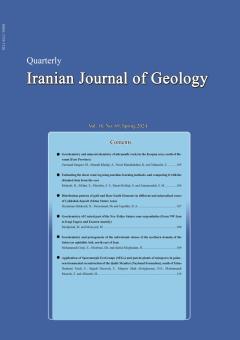-
-
List of Articles
-
Open Access Article
1 - Geochemistry and mineral chemistry of ultramafic rocks in the Koopan area, south of Bavanat (Fars Province)
Maryam Zurmand Sangari Ahmad Ahmadi Khalaji Kamal Noori Khankahdani Zahra Tahmasbi -
Open Access Article
2 - Estimating the shear sonic log using machine learning methods, and comparing it with the obtained data from the core
Houshang Mehrabi Ebrahim Sfidari Seyedeh Sepideh Mirrabie Sadegh Barati Boldaji Seyed Mohammad Zamanzadeh -
Open Access Article
3 - Distribution pattern of gold and Rare Earth Elements in different and mineralized zones of Lakhshak deposit (Sistan Suture zone)
Nasim Heydarian Dehkordi Sh. Niroomand Hossein Ali Tajeddin -
Open Access Article
4 - Geochemistry of Central part of the Neo-Tethys Suture zone serpentinites (From NW Iran to Iraqi Zagros and Eastern Anatoly)
monir modjarrad Mohsen Moayyed -
Open Access Article
5 - Geochemistry and petrogenesis of the subvolcanic domes of the northern domain of the Sabzevar ophiolitic belt, north east of Iran
E. Mohammadi Gorji Ghasem Ghorbani Hadi Shafaii Moghadam -
Open Access Article
6 - Application of Sporomorph EcoGroups (SEGs) and parent plants of miospores in palaeoenvironmental recontruction of the Qadir Member (Nayband Formation), south of Tabas
Firoozeh Hashemi Yazdi F. Sajjadi Hezaveh Narges Sadat Mirpoor Shah Abolghasemi Zahra Mohammadi Manesh Mohsen Allameh
-
The rights to this website are owned by the Raimag Press Management System.
Copyright © 2017-2025







